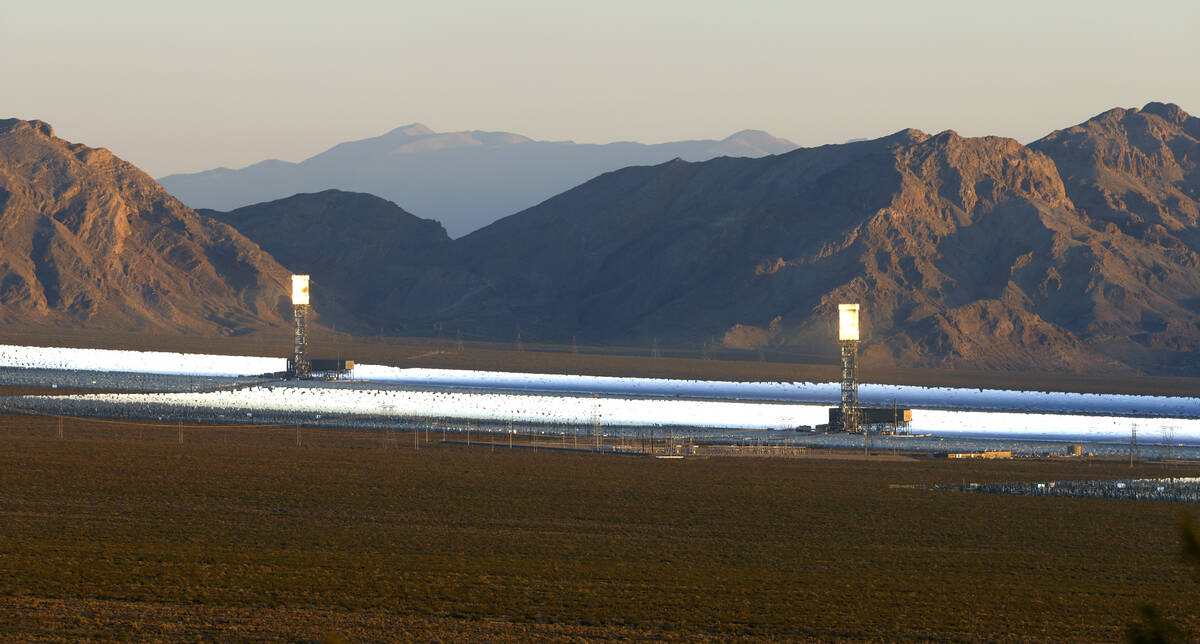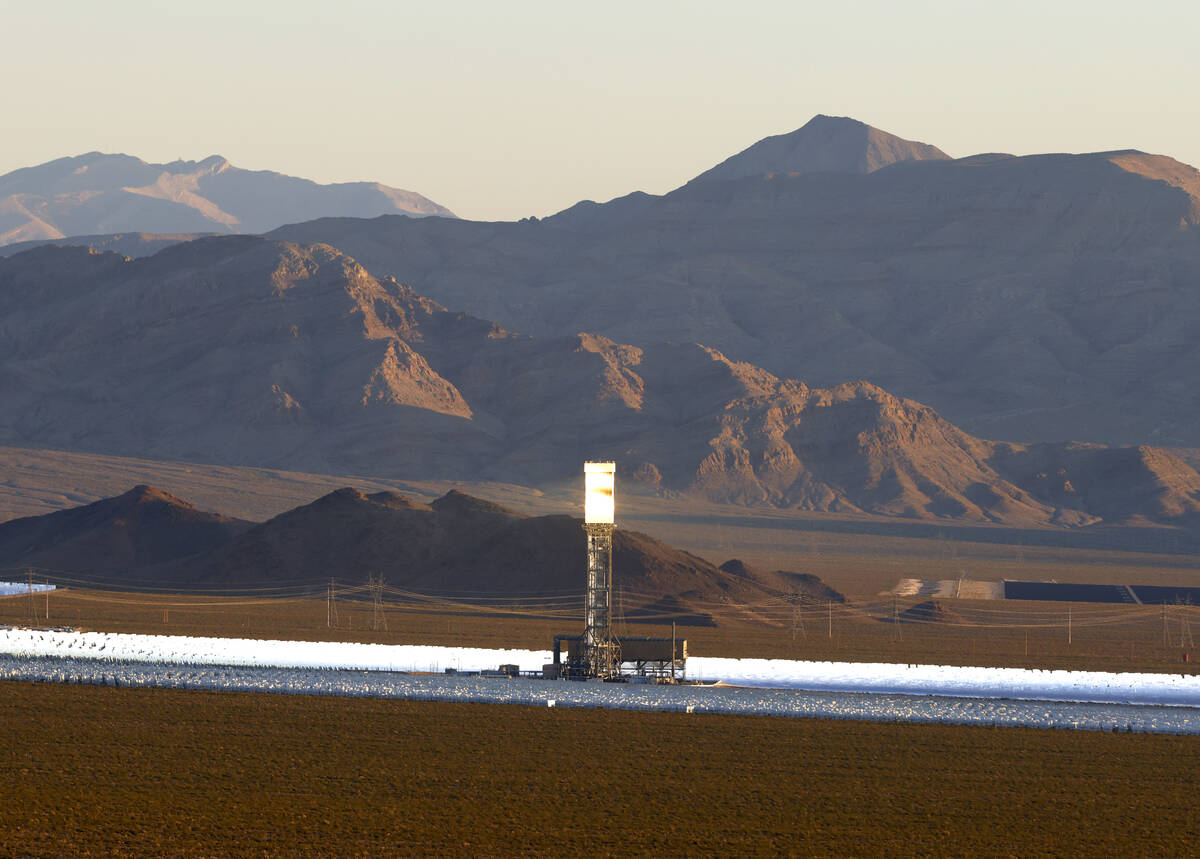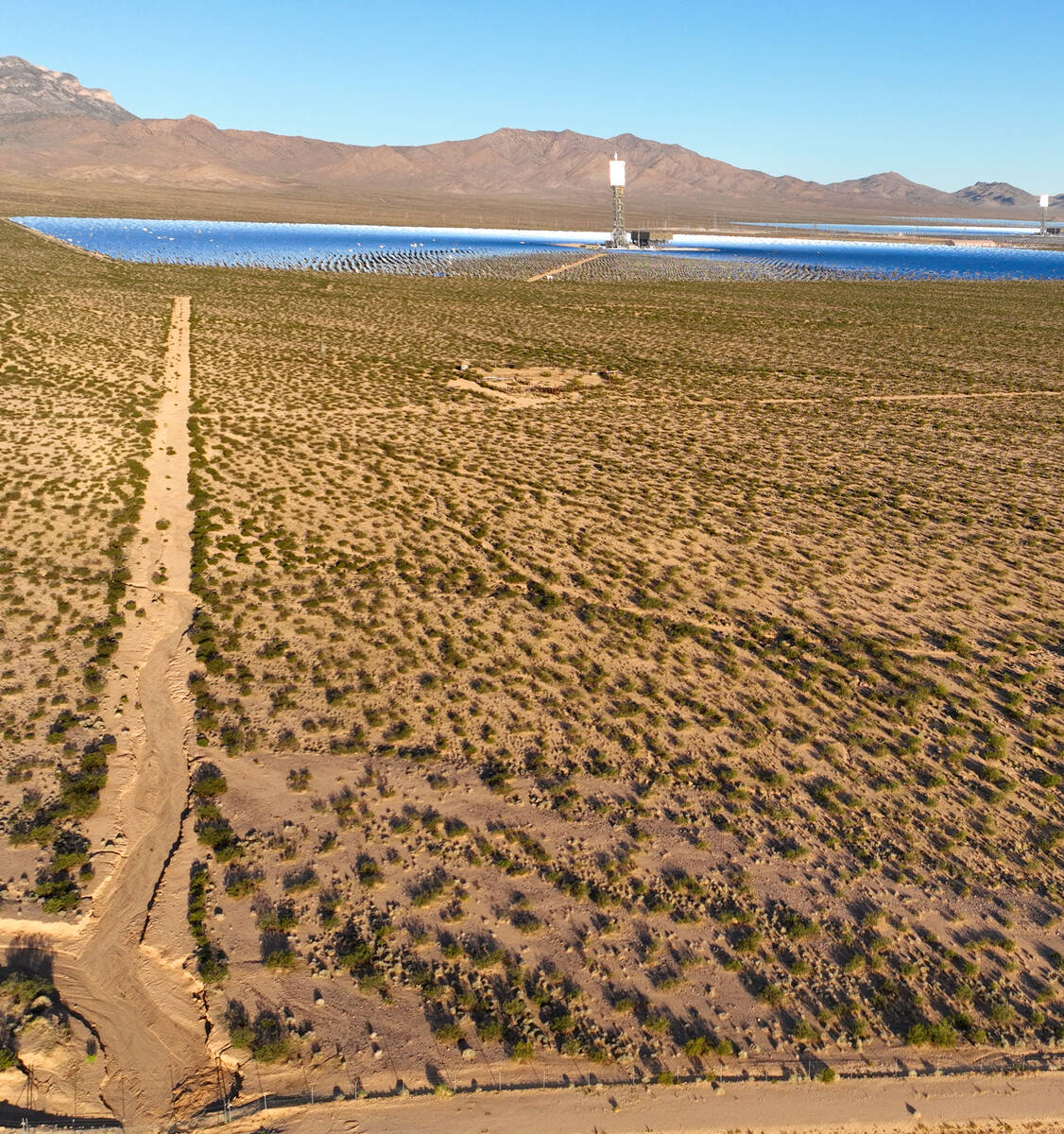What are those towers surrounded by fields of mirrors off I-15?
Just 45 miles south of Las Vegas lies a glistening, pixelated maze with towers poking up from the center.
The site may seem like an art installation, but it is actually a solar plant. The Ivanpah Solar Electric Generating System spans 3,500 acres and generates up to 400 megawatts of clean energy, which is enough power for 140,000 homes.
The plant pops up on the right just as you enter California on the Interstate 15.
Construction began in 2010 and was completed at the end of 2013. After over 10 years in operation, solar development company NRG is proud of how far the plant has come.
“After what we started in 2010 to where we are today it truly is amazing to see this all coming together, all of these moving parts,” NRG employee Doug Davis said in article on NRG’s website.
As opposed to the typical rooftop solar energy most people are familiar with, these 350,000 computer-controlled mirrors reflect the sunlight onto boilers atop 459-foot towers.
Lying in the middle of the desert, the site attracts plenty of sun.
The site has been fairly controversial even before its inception, with regulatory and legal issues regarding protecting animals and the impact on Mojave milkweed and other plants.
Federal wildlife officials said Ivanpah might act as a “mega-trap” for wildlife, with the bright light of the plant attracting insects, which in turn attract insect-eating birds that fly to their death in the intensely focused light rays.
So many birds have been victims of the plant’s concentrated sunrays that workers referred to them as “streamers,” for the smoke plume that comes from birds that ignite in midair. When federal wildlife investigators visited the plant around 10 years ago, they reported an average of one “streamer” every two minutes.
Solar energy around the southwest has also been controversial. Environmentalists have pushed back on utility-scale solar development, concerned that construction will take too much water and threaten federally protected species.
There will likely be much more solar to come to the Nevada desert with the release of the Bureau of Land Management’s Western Solar Plan, which opens up about 12 million acres of public land in the state for solar development.
Contact Katie Futterman at kfutterman@reviewjournal.com.





















